Myna birds are passerines or songbirds. They don’t all belong to one species or even one genus. All of them, basically, are types of starlings and belong to the family Sturnidae. These intelligent, admittedly noisy, and fascinating birds have been introduced around the world, including in California, Hawaii, Florida, Australia, New Zealand, and Japan. Some species of myna make enjoyable pets.
Amazing Myna Bird Facts!
The word myna is derived from the Hindu word maina, which means “messenger of God.”
The myna is capable of an amazing variety of sounds, some of which sound like human speech. The hill myna, however, doesn’t have a song of its own.
The myna bird Gracula religiosa probably got its epithet because it was taught to recite prayers.
The Sri Lanka Hill myna appears on the country’s 10 rupee postage stamp.
The Sema Nagas people won’t eat the pied myna. It can mimic human speech, and they believe the bird is a reincarnated human.
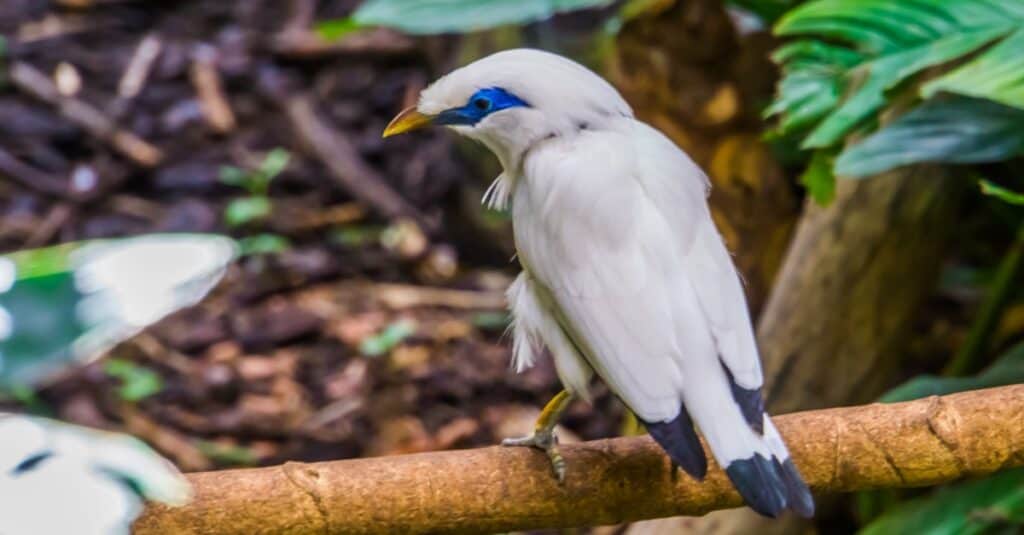
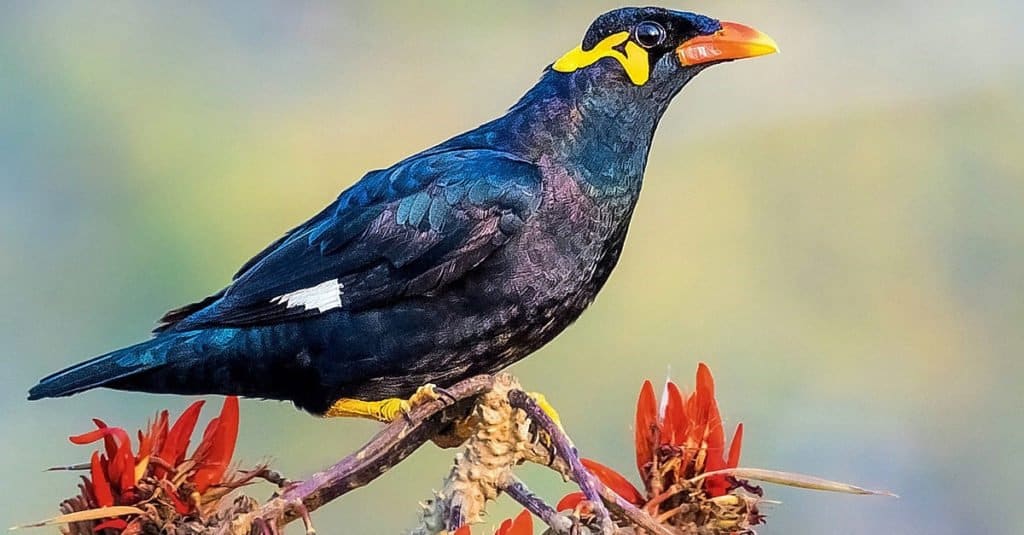
It’s thought that starlings (including myna genera) originated in East Asia, due to the number of traits shared between species showing they have a common ancestor, and then migrated to Africa.
Fossil evidence of these birds is limited, however, scientists believe that it’s possible family members of Sturnidae were present in the Early Miocene around 25 million years to 20 million years ago.
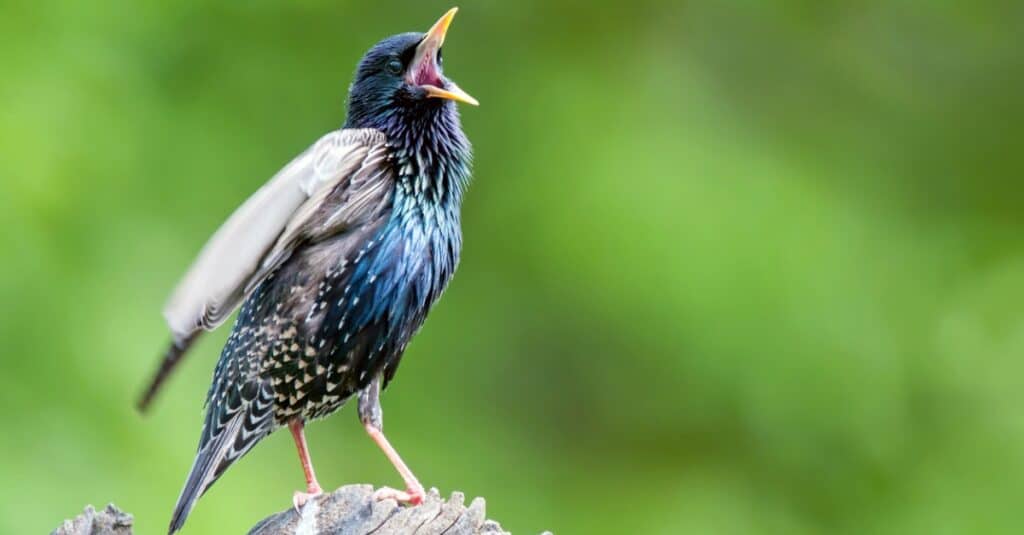
Myna birds are medium-sized passerine birds with strong, usually yellow feet and legs. Their bills are also frequently yellow, though some mynahs have bills that are blue-green, black, or red. Their black feathers are often iridescent, and many species have yellow wattles or patches of bare skin on their faces or necks. Some birds have a ring of bare skin around each eye. Males and females are alike in most species though males may be a bit more robust. Some mynas, such as the Sulawesi myna, have tufts of feathers on their heads that form a crest, and the crest may be higher in the male.
Many types of myna birds have short tails, though the white-necked myna’s tail is notably long. Not only this, but its black-and-white coloration has made people mistake it for a magpie.
Myna birds tend to be longer and heavier than most other kinds of starlings. The weight of the Nias hill myna can be as much as 14 ounces.

Myna birds who are foraging hop over the ground and use their beaks to pry open small holes to gain access to prey. Pairs groom each other. They are also amazingly vocal and have a repertoire of sounds that include screams, wails, gurgles, and whistles. The myna bird learns these vocalizations when it’s young, and there are different dialects for birds that live far apart from each other. The common hill myna is especially masterful at mimicry and can mimic a human voice with alarming accuracy.
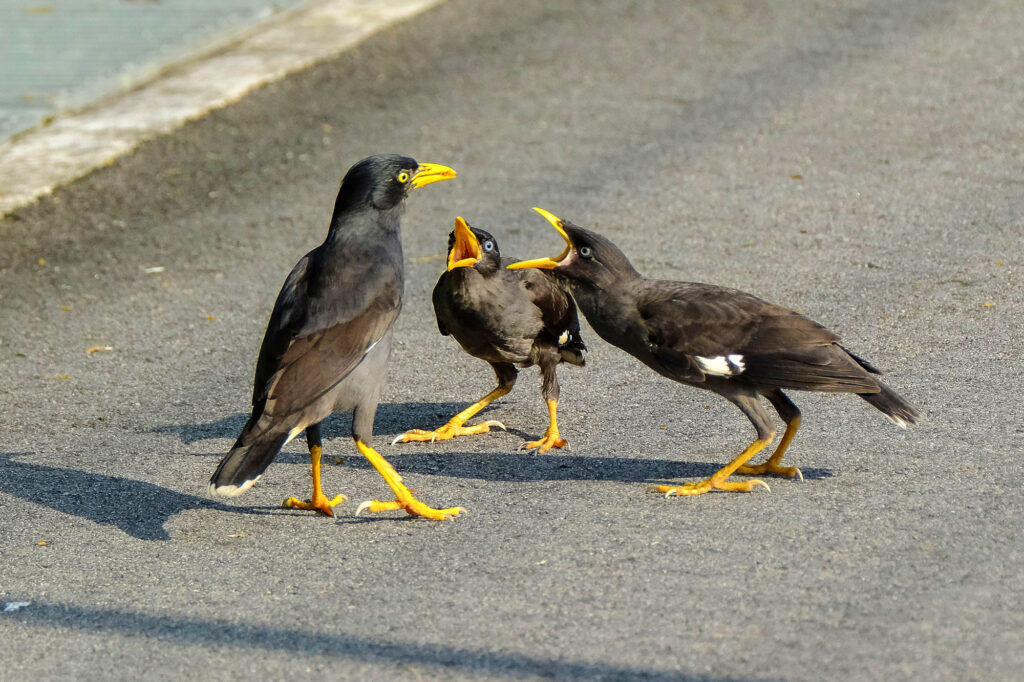
Most myna bird species nest in cavities in tall trees, but birds such as the bank myna excavate nests in the mud of river banks or even in cavities they find in brick walls. Some myna species are known to evict small mammals from their burrows. Mynas line their nests with twigs, feathers, roots, rubbish, snarls of fibers, and leaves.
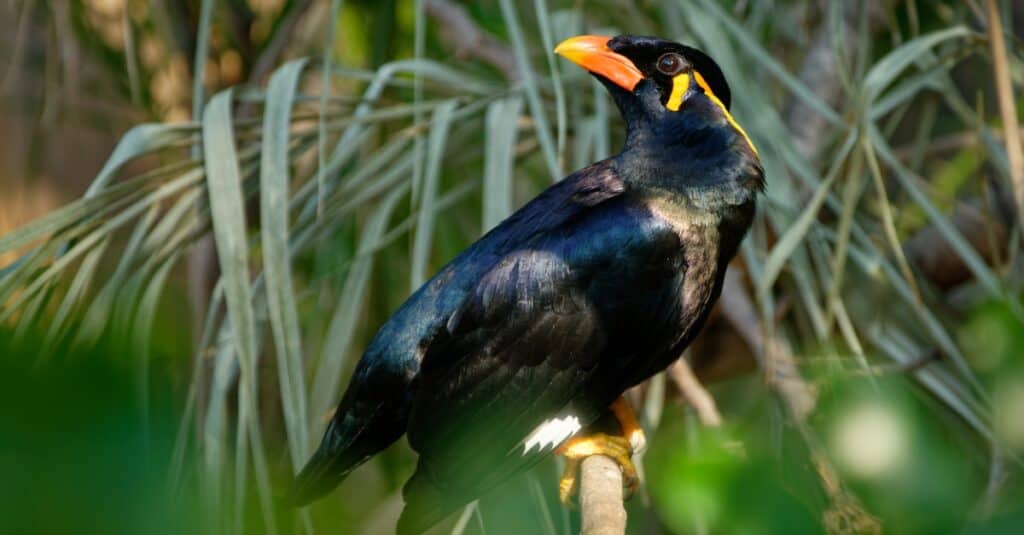
The population of myna birds also depends on the species. The common mynah bird Acridotheres tristisis is, as its name says, common. It is abundant in its range, with its population increasing, and may be a pest in some areas where it competes with native species. Other species are vulnerable or even endangered. These species include the Bali myna, which is Critically Endangered with scientists believing that fewer than 100 adult birds are left in the wild, the Critically Endangered Nias hill myna, and the pale-bellied myna, whose status is Vulnerable.








